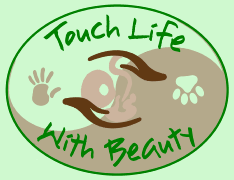Alan Howell Essential Oils
Shechina
21, Chatsworth Crescent
HOUNSLOW
Middlesex
England
TW3 2PE
Telephone:
0208 569 8440
Facsimile:
0208 569 8440
0845 458 5757
0845 458 5757
Telephone and Facsimile
International:
+4420 8569 8440:
Touch Life With Beauty


Shechina
Essential Oils
By Alan Howell
CAPE SNOWBUSH OIL MONOGRAPH
Eriocephalus africanus
Asteraceae
INTRODUCTION
Eriocephalus africanus is a common, fragrant woody shrub that occurs in specific
localities in the Western Cape. The leaves are similar to those of rosemary (Rosmarinus
officinalis), but are greyer in colour. In spring the plant is covered in small white
flowers, giving the impression that the plant is covered in snow -
When Schveyver visited the Cape (circ.1677) he distilled a plant called 'roosmaryn' growing in the Company's garden. This is most likely to be E. africanus. In his records he penned "das köstliche Rosemarienöhl" (the precious rosemary oil). This is the earliest record of an essential oil extract from a South African plant.
DISTRIBUTION
Eriocephalus africanus has a wide distribution in the Western Cape and Karoo.
EXTRACTION
Essential oil by steam distillation of stems and leaves. Harvested from wild crafted plants. The oil is extracted from plants from a specific locality.
DESCRIPTION OF THE OIL
The oil is viscous and pale yellow in colour. The fragrance is remotely similar to Cape chamomile oil, but with unique aromatic, bitter, spiced artemisia notes.
MAIN CHEMICAL COMPONENTS
Linalyl acetate, cymene, 1,8-
FLAVOURS
Snowbush oil is suited to fruit flavours. It has been used traditionally to enhance the flavour of meat and legumes.
FRAGRANCES
With the unique combination of bitter, spiced, artemisia and aromatic notes it could have exciting potential for new fragrances.
TRADITIONAL USE
Little information on the traditional use of E. africanus. Is used a diuretic, and has been used to treat oedema and stomach ache.
AROMATHERAPY
PROPERTIES: Antidepressant, antiseptic, antispasmodic, balsamic, bechic, carminative, cephalic, decongestive, digestive, diuretic, haemostatic, restorative, sedative, stomachic, styptic, sudorific, tonic, vulnerary.
USES: Colds, coughs, colic, diarrhoea, dysentery, flatulence, hair tonic, influenza, insomnia, menstruation, muscular pain.
CONTRA-
BLENDS: Basil, bergamot, benzoin, cedarwood, frankincense, fennel, geranium, ginger,
lemon, litsea cubeba, mandarin, palmarosa, sandalwood, vetivert, ylang-
GENERAL USES: Mental and emotional. Warming to the emotions, useful in the treatment of depression. Helps in the letting go of negative thought forms to clear the mind and achieve a positive gentle perspective. This oil is useful in the treatment of addictive personalities and for those who have no time to allow themselves healing.
Physical. Useful in the treatments of colds and flu. It eases coughing and helps
the body to expel mucous. Aids digestion, calms intestinal cramps, relieves flatulence
and colic, useful in the treatment of diarrhoea and dysentery. Excellent for scanty
or painful menstruation, oedema of the legs (pre-

| Homoeopathy under threat |
| Essential Oils |
| Carrier Oils |
| Blended Oils |
| Other Oils |
| Essential Oils A - D |
| Essential Oils E - L |
| Essential Oils M - P |
| Essential Oils R - Z |
| Feng Shui Blends |
| Creams & Lotions Ingredients |
| Base Cream Recipe |
| Soap Ingredients |
| Therapists Metal Carry Case |
| 24 Bottle Boxes |
| Bottle & Jar Illustrations |
| Monograph Index |
| Argan Oil Page II |
| Reverend Shianna |
| Page 64 |
| Free Website Listings |
| Alan Howell |
| Alan Howell CV 1 |
| Alan Howell CV 2 |
| Alan Howell CV 3 |